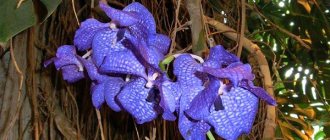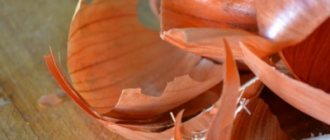- Growth period
Beautiful orchids, mainly various varieties of the Phalaenopsis genus, have long taken pride of place on the windowsills of apartments and private houses. These representatives of tropical flora captivated Russians with the shape of the flower, reminiscent of a butterfly, the variety of colors, the long flowering period, and the availability of purchase. Experienced flower growers know that to maintain a flowering appearance, a plant needs to be provided with a constant temperature, a certain regime of lighting, humidity, and fertilizing. We will tell you in the article what and how to feed an orchid.
Phalaenopsis (pictured) is one of the species most common in home floriculture
Nutrient requirements
The need for nutrients directly depends on the time of year.
In spring and summer , thanks to long daylight hours and elevated temperatures, orchids can process more nutrients faster than in winter and autumn , when the temperature drops and daylight hours are shortened.
Each nutrient and the product of its transformation has its own purpose for the development and well-being of plants.
Depending on their role in metabolism, all nutrients can be divided into two groups:
- BUILDING ELEMENTS are substances necessary for a plant to form its organs (leaves, root system, etc.).
This group includes: proteins, fats, carbohydrates, organic acids, carbon, hydrogen, oxygen, nitrogen, phosphorus, sulfur, etc.
- FUNCTIONAL ELEMENTS are substances that influence certain processes occurring inside plants.
This group includes: potassium, calcium, magnesium, zinc, iron, boron, manganese, copper, molybdenum, chlorine and others.
Watering schemes for lush orchid flowering
Watering phalaenopsis for lush flowering at home is carried out according to the following scheme:
- During the formation of the peduncle, it is necessary to water at the root every 4-7 days.
- During the dormant period, watering should be done every 15 days and very little at a time.
- After transplanting, moisten the substrate using the immersion method. The next watering should be carried out only after 2 weeks.
Algorithm for feeding an orchid so that it blooms magnificently at home:
- Step 1. A couple of days before applying the liquid product, water with clean water.
- Step 2. Prepare the working solution according to the instructions. If you use a universal remedy for flowers, then reduce the dosage by half.
- Step 3. Allow the solution to warm to room temperature.
- Step 4. Pour the composition into a container.
- Step 5. Place the orchid pot in this container for a quarter of an hour.
- Step 6. Take out the flower and let the bottom dry, then return it to its place.
Types and composition of fertilizers
There are 3 main groups of fertilizers:
- Organic;
- Inorganic;
- Chelates.
Organic fertilizers
They are of natural origin.
As a rule, these are waste products or decomposition products of animals and plants (bone meal, manure, humus, bird droppings, compost, etc.).
For the most part, such fertilizers contain nitrogen , which in its pure form is not available to plants.
In order for the orchid roots to begin to absorb such fertilizer, it must be processed by microorganisms.
This process directly depends on:
- composition and degree of substrate moisture;
- general temperature of the plants;
- total number of microorganisms.
The process of processing substances occurs uncontrollably.
Nitrogen may be produced either too little or too much.
In organic fertilizers, the remaining microelements necessary for orchids are either not contained at all or in a very low proportion.
Inorganic fertilizers
It is obtained synthetically by mixing macro- and microelements in certain doses.
Inorganic fertilizers are quickly absorbed by orchids, but they strongly salt the substrate and are difficult to wash out of the pot.
Most mineral complexes contain 3 main elements :
- Nitrogen (N);
- Phosphorus (P);
- Potassium (K).
The following can be added to the main elements in small quantities:
- Iron;
- Calcium;
- Manganese;
- Zinc;
- Molybdenum;
- Magnesium;
- Boron;
- Seru.
Fertilizer packages always contain the exact ratio of all three elements. For example, N:P:K = 10:4:7, which in turn means that nitrogen, phosphorus and potassium have a ratio of 10:4:7.
Sometimes the fertilizer packaging indicates the ratio of four numbers, the fourth being magnesium.
Modern complex fertilizers for orchids contain these microelements in different proportions.
Depending on the ratio of fertilizer elements, there are:
- Balanced;
- Nitrogen;
- Phosphorus.
A fertilizer with an NPK formula of 20-20-20, 12-12-12 or 6-6-6 is called balanced . There are equal amounts of all elements in such a fertilizer, but in absolute numbers there are most of them in the first formula.
The formula of nitrogen fertilizer is most often NPK 30:10:10. There is more nitrogen in this fertilizer than phosphorus and potassium.
Nitrogen fertilizer is used limitedly - at the beginning of the growing season for orchids planted in organic substrates (untreated bark, peat).
Organic substrates, immediately after the start of use, begin to decompose little by little and are colonized by bacteria, which absorb most of the available nitrogen. Therefore, the risk of overfeeding the orchid with nitrogen is minimal.
Phosphorus fertilizers, for example, NPK 10:30:20, are used to stimulate abundant flowering. The best time to apply phosphorus fertilizer is 1-2 months immediately before the expected flowering period.
More details about the signs of deficiency or excess in the next article.
Chelates
Unlike the first two varieties, they are absorbed by the root system (and leaves) almost instantly.
Chelate (from the Greek chele, “claw”) is a complex organic complex, a chemical combination of a trace element with a chelating (capturing) agent.
Such an agent firmly holds microelement ions in a soluble state until they enter the plant.
Then it releases it, converting it into a biologically accessible form, and itself breaks down into chemical compounds that are easily absorbed by plants.
Chelated fertilizers can be “ single ”, including only one microelement (for example, Fe-EDTA or Fe-DTPA), or they can be complex (for example, an aqueous solution of chelates of microelements Mn, Zn, Cu, Mo based on HEDP).
They have a positive effect not due to the substances they contain. Beneficial microorganisms simply facilitate the absorption of nutrients that are already present in the substrate.
With the correct dosage, in addition to the positive effect, they do not cause any obvious or hidden damage to the plant.
Features of the use of certain types of fertilizers
You will learn in detail about what types of fertilizers for orchids exist in this article.
Growth stimulants
The first stimulant obtained was heteroauxin . Treating the seeds with it brought successful shoots. Works well when transplanting or rooting:
- "Kornevin" and "Etamon" are stimulants of the root system. The spectrum of action is similar to that of heteroauxin. The difference between the preparations is that one is used directly at the root, and the other by processing along the leaf;
- “Zircon” not only stimulates the formation and growth of the root system, but also increases the resistance of orchids to fungal diseases;
- "Epin" is good for transplanting, helping plants to take root faster;
- “Ovary” and “Bud” are stimulants of formation, acceleration of buds and flowering.
There are several other types of stimulants that are effective at a certain point in cultivation. With a more or less pronounced effect. Their use must be carried out strictly following the instructions supplied by the manufacturer.
Read more about growth stimulants here.
Zircon
It is considered a fairly strong drug for orchids. The response to its action occurs very quickly and actively. When using it as a stimulant for orchids, it is very difficult to predict and control the process of action.
Even during the dormant period at low temperatures, it is very effective. Experienced orchid growers recommend using it only if the plans do not include orchid blooms for this year.
You can find more information about Zircon here.
Epin
Biostimulator, much softer than zircon, especially for the adaptation of orchids after purchase. Has a wide range of applications:
- immunostimulant;
- mitigation of stressful situations;
- improves vegetative mass gain;
- increases the duration of flowering;
- increases overall stability;
- removes heavy substances and nitrates.
Epin is a popular remedy for orchids.
Read more about Epin in this article.
Kornevin
The root formation stimulator is used mainly for rehabilitation of the root system and for orchid transplants. Either diluted as a solution or sprinkled on the roots. The instructions for use must be strictly followed.
Important! It is rarely used for orchids, although according to some gardeners, it has a positive effect.
Read more about the use of Kornevin here.
Bona forte
A biologically active activator containing bacterial strains, ethyl fatty acids and urea. Stimulates growth and flowering processes.
A good helper for orchids during transportation, during transplantation, in low light, heat and moisture.
Used as a biostimulant at any stage of plant development . Activates the immune system, improves the decorative qualities of the orchid and stimulates the development of the root part.
You will find more information about using Bona Forte in this article.
Fitolavin
It is more used as a systemic biological bactericide to combat fungal and bacterial diseases.
As a growth stimulant, it is not often used by gardeners, although it has a stimulating effect on growth and development. But, during periods of illness, the properties of stimulating growth and development are quite effective when using Fitolavin.
More details about Fitolavina are written in this article.
Acids
When it comes to acids, gardeners usually remember only amber. However, there are several other acids that will benefit the orchid. Read below about how you can fertilize a flower with maximum benefit.
Read the most detailed information about the use of acids here.
Bornaya
One of the most accessible and cheapest drugs. A solution of this acid can be called an analogue of the known stimulant “Ovary” for the formation of buds and ovaries.
The use of boric acid as a fertilizer.
Burshtinovaya (amber)
The main problem with orchids is the root system. It is involved in the process of feeding the entire above-ground part and photosynthesis.
Burshtinic acid:
- stimulates the growth of the root system;
- promotes orchid recovery after stressful situations;
- strengthen the immune system;
- significantly accelerates photosynthesis processes.
It heals not only the substrate, but also the entire plant.
You can read more about succinic acid here.
Nicotine
Nicotinic acid or vitamin B3 is used in vitamin cocktails.
The use of nicotinic acid accelerates the flowering process, improves reproduction, and helps the plant during the period of resuscitation after illness. It also stimulates the orchid well to form new flower stalks and shoots.
Ascorbic
- Good chlorophyll reducer and hydrogen supplier;
- Increases plant protection from all kinds of diseases;
- Helps improve biomass respiration ;
- Helps with direct sunlight and lack of moisture;
- Good growth normalizer ;
- An excellent antioxidant .
Potassium permangantsovka
Potassium permanganate KMnO4 is used not only as an antioxidant when processing plants, but also as a fertilizer. But this happens very rarely, since an error in dosage can lead to disastrous consequences.
Watering with a weak solution is a prevention against diseases ; if necessary, it increases the acidity of the substrate and supplies the orchid with potassium and manganese.
Potassium permanganate is often used to prevent diseases.
In most cases, it is used for putrefactive diseases of the root system. When preparing the substrate yourself, some gardeners prefer treating the components with a manganese solution.
You will get more information about the use of potassium permanganate from this article.
Dr. Foley
A ready-made preparation for foliar feeding of orchids with a balanced composition of macro- and microelements, minerals, vitamins, phytoharmones and amino acids.
Ready-made foliar food for orchids with therapeutic and prophylactic properties. Efficiency:
- intensively nourishes the plant;
- prevents leaves from drying out and chlorosis;
- stimulates active bud formation and lush flowering;
- enhances the brightness of floral shades;
- increases resistance to adverse environmental factors.
Read more about Doctor Foley fertilizer here.
Fungicides
The use of fungicides is used to treat plants from fungal diseases , which are especially noticeable in winter.
The combination of lowering the temperature and air circulation in the substrate activates fungal diseases, which can destroy the orchid in a matter of days or even hours.
The choice of drugs, both domestic and imported, is very large. It is important to find out the cause of the disease , which will give the right decision when choosing a drug and not make a mistake with the manufacturer.
Flower growers often complain about the ineffectiveness of the drug because they are purchasing a fake.
There are systemic and non-systemic fungicides . The difference between them is that some act through plant tissue throughout the plant for a long time. Others come into direct contact with the pathogen and require careful treatment of the plant.
The most famous of them:
- Acrobat;
- Previkur;
- Topaz;
- Ridomil Gold;
- Rovral;
- Aliette;
- Physan;
- Subdue;
- Advanced Bayer Allin-One Rose&Flower Care.
Read more about fungicides here.
Fundazol
Systemic fungicide . Defence from:
- spotting;
- powdery mildew;
- snow mold;
- plantings;
- root rot;
- other fungal diseases.
Fundazol.
You will find more information about the use of Fundazol in this article.
Mycorrhiza
Mycorrhiza is a symbiosis of a fungus and a root . Mycorrhiza-forming fungi deliver nutrients and moisture to the plant, for which they receive assimilate, which is produced by photosynthesis. Significantly improve the supply of moisture, nitrogen-containing substances and phosphates . Protect roots from pathogenic microorganisms and increase resistance to moisture deficiency.
Preparations containing mycorrhiza are effective against various fungal diseases . The mycorrhizal vaccine for orchids contains a mycorrhizal fungus that is naturally present in orchid plants. The symbiosis of fungi settling on the root part of the plant helps the latter to better absorb and assimilate nutrients and improves immunity.
need mycorrhiza-forming fungi .
Read more about mycorrhiza here.
Agricola
For indoor orchids, this is a pretty good fertilizer, containing an NPK ratio of 4:5:6 and a good, necessary set of microelements in chelated form.
Flower growers consider the unspecified composition of microelements and the lack of acidity of the solution to be a disadvantage.
One of the most important deficiencies is the lack of magnesium , which plays an important role in the formation of chlorophyll.
Read more about Agricola in this article.
Yeast
The use of yeast feeding has appeared relatively recently. Yeast contains a group of B vitamins , which is a good stimulus for the formation of new flower stalks and accelerating flowering.
There is also an important drawback. During the fermentation process, potassium , one of the most important macroelements, is taken from the substrate.
Advice! Before using this fertilizer, potassium fertilizers should be applied. In addition, this type of fertilizer should not be used frequently, no more than once a year.
You can find more information about using yeast here.
Cytokinin paste
Hormonal drug based on cytokinin:
- promotes active cell reproduction;
- awakening dormant buds;
- growth stimulator;
- promotes the formation of strong shoots quite well;
- accelerates flowering processes;
- activates metabolism.
Cytokinin paste can help in the resuscitation and restoration of almost dead orchids. In addition, its use guarantees 100% results for the education of children.
Use of cytokinin paste to awaken a dormant kidney.
You will find the most important information about cytokinin paste in this article.
Pokon
A good fertilizer for orchids and more. The composition includes the entire necessary set of nutrients and microelements. Available in liquid form and in the form of sticks installed in the substrate. Increases the frequency and duration of flowering.
Read more about Pokon here.
Hydrogen peroxide
An excellent disinfectant that serves not only to prevent root rot, but also as a good growth stimulator. Excellent fight against bacteria . It is used as an irrigation in a certain concentration and in the treatment of orchids by leaf.
Read more about the use of hydrogen peroxide in this article.
Fitosporin
Protection against bacterial and fungal diseases:
- scab;
- withering;
- blackleg;
- late blight;
- root rot;
- mold;
- powdery mildew;
- brown rust, etc.
Use only in liquid form.
You will get more information about Fitosporin from this article.
Fitoverm
Insecticide, acaricide. Against ticks, thrips, aphids and caterpillars.
Read more about Fitoverm here.
Aktara
New generation insecticide . Used by flower growers to combat insects and pests:
- scale insect;
- thrips;
- Colorado beetle;
- aphid;
- codling moth and many others.
You can read more about Aktar in this article.
Other
Also on our website you can find a detailed description of the use of the following fertilizers:
- Augustine, castor oil, aspirin, Multiflor, Aurica Gardens;
- Guano, Biomaster, Blank Leaf, Flower Paradise;
- Maxim, Biopon, Ribav Extra, vermicompost, Fasco;
- Spray effect, Bio effect, Ecogel, Joy;
- Clonex gel, Mister color, iron chelate, Greenworld, Aevit;
- Previkur Energy, urea, Cytovit, Heteroauxin, Kokedama.
And from this article you will learn about what soil additives are used for orchids.
Fertilizing orchids at different periods of development
At different periods of orchid development, fertilizer compositions with different ratios of components are used.
The content of nitrogen, phosphorus and potassium in them depends on what phase the orchid is in:
- During the period of active growth, a fertilizer with a high nitrogen content is necessary, since nitrogen is responsible for the growth of vegetative mass.
- During planting and budding, fertilizer with a high content of phosphorus and potassium is necessary.
Isn't it time to feed?
If there is a nutritional deficiency, the orchid itself will attract attention. The need to apply fertilizers is indicated by:
- long absence of flowering;
- the plant blooms, but the flowers are small and fall off;
- cessation of growth of new leaves or their shrinkage;
- change in leaf blade color (lightening);
- the lower leaves turn yellow, dry out, and die.
It’s easy to guess that it’s time to feed your orchid at home by the appearance of the plant.
How to feed an orchid?
When deciding how to feed an orchid, it is worth taking into account the species characteristics and place of their growth in nature.
Feeding for epiphytes
Epiphytes include such representatives as phalaenopsis, vanda, cambria, dendrobium, etc.
Their nutrient requirements are low. In nature, these plants are content with the grains that rain washes off the trees.
IMPORTANT! For epiphytes, it is recommended to use only mineral fertilizers.
Feeding requirements for terrestrial species
Terrestrial orchids include some types of paphiopedilum, growing in rock crevices where various organic remains, cymbidium, ludisia, etc. accumulate.
Their need for nutrients is higher, because decomposing organic remains are always present on the ground (rotted leaves, grass, branches, animal waste products).
They respond well to the addition of organic matter, in addition to mineral complexes. For example, cymbidiums often refuse to bloom unless organic matter with a sufficiently high nitrogen content is added.
IMPORTANT! Before using the fertilizer, be sure to read the instructions for its use. Strictly observe the dosage.
Reviews
Irina, Moscow (Pokon). “I only have four orchids, but I try to give them the best care. Fertilizers from Pocon help me with this. I have been using this brand for quite some time. Economical, convenient and effective. I am always confident in the quality, the result consistently meets expectations.”
Evgeniy, St. Petersburg (Mr. Color). “Once I decided to try this fertilizer for my palm trees - I liked it, and I bought it for orchids. Since then I forgot about the agony of choosing fertilizers. A good drug, no questions asked. I use it according to the instructions, but I try to add a little less than necessary. All orchids bloom consistently every season.”
Anastasia, Yaroslavl (Agricola). “It is well suited for flowering, as it contains a lot of phosphorus. I fertilize in the “summer” period twice a month, by immersion for 20 minutes. Orchids grow and bloom well. When they grow buds, I reduce the concentration. Gives good results, can be stored in the cold, and is also suitable for other beautiful flowering plants. No better and no worse than others. Convenient glass included.”
Lydia, Ryazan (Bona Forte). “I use it to stimulate growth. I feed in spring and until mid-summer. Then I switch to fertilizers with a focus on phosphorus. I alternate root feeding with leaf feeding, and use sprays from third-party manufacturers. If you use your head a little, this combination of different fertilizers at the right time gives better and more controlled results.”
Fertilizer application methods
There are two ways to deposit:
- Root feeding.
Using this method, the roots are soaked or spilled with a solution containing fertilizer.
- Foliar (foliar) feeding.
Fertilizers are applied to the leaves, most often using a spray bottle. Since most of the stomata on leaves are located on the lower part of the leaf, this is where fertilizer should be sprayed.
Foliar feeding can be used in parallel with root feeding, or can be used independently when the orchid does not have roots or it is necessary to deliver microelements directly to the leaves (for example, during chlorosis).
IMPORTANT! The use of fertilizers in the form of sticks or tablets is not recommended, since in conditions of breathable substrates based on the bark of coniferous trees, they have a very small positive effect on orchids.
When not to fertilize
Feeding is strictly contraindicated in the following cases:
- A newly purchased or gifted flower should be given at least 2 weeks time to adapt and only then begin caring for it according to all the rules.
- Immediately after the transplant. No matter how carefully the plant is transshipped, the roots will inevitably be damaged and will not be able to absorb the nutrient solution, which means that the elements will precipitate in the form of salts.
- It is better not to feed sick or weak plants; foliar feeding is acceptable.
- To avoid burns on the leaves, foliar feeding is not carried out in sunny weather.
Rules for feeding orchids
It is best to use a specialized fertilizer, marked on the package “For orchids,” since they are specially balanced in relation to the needs of the orchid and cause the least harm to their root system.
The substrate is a special microclimate where various bacteria, fungi and other microorganisms live.
When fertilizing, you fertilize not only the orchid itself, but this entire friendly family taken together.
Each component of which, to one degree or another, is involved in the processing of fertilizer in order to extract useful elements from it and present them to the orchid roots in a form accessible for absorption.
The processing of many useful substances takes a fairly long period - first they accumulate in the substrate, are gradually processed by microorganisms, and then end up inside the orchid.
The older the substrate , the greater the number of such elements it contains , and the higher the likelihood that too many substances will accumulate and they will become toxic to nearby roots.
Salinization of the substrate will occur , followed by massive death of roots.
In order to avoid this, orchids growing for a long time in old substrates need to be fertilized an order of magnitude less often than in new ones.
The opposite situation occurs inside pots of recently transplanted orchids .
At first, the microflora necessary for the further promotion of beneficial substances is practically completely absent.
To build it, you will need not only a certain period of time, but also a large amount of nitrogen (especially in clean bark).
It is not uncommon during this period when orchids begin to suffer from a lack of it, turning yellow and dropping leaves, because all the nitrogen available for nutrition is spent on building new microflora.
What folk remedies can you water an orchid to make it bloom?
In order to stimulate orchid flowering at home, it is not at all necessary to buy drugs in the store. It is quite possible to prepare effective fertilizers according to folk recipes.
Below are the most popular folk fertilizers that can be used to water an orchid.
Banana peel infusion
Banana peels are rich in potassium, an important element for an orchid to bloom quickly and efficiently.
The working solution is prepared at home as follows: pour one banana peel with a liter of water for 2 days. The resulting concentrate is diluted in a 1 to 1 ratio with clean water.
Water the flower with the working solution.
Potato decoction
The water left over from boiling potatoes contains potassium, phosphorus, and starch.
To enhance the effectiveness of the liquid, you can add a spoonful of sugar to it. Based on 1 tbsp. spoon for 2 liters of broth.
IMPORTANT! Before watering, the working solution must be cooled!
Onion broth
An infusion of onion peels is prepared as follows: pour a handful of onion peels into 3 liters of water. The mixture is boiled and allowed to brew for half a day.
The working solution is prepared in a ratio of 1 to 3.
Ash infusion
Ash is one of the best organic fertilizers that you can water your orchid at home.
The working solution is prepared as follows: 200 grams of ash are mixed with a liter of water and infused for 24 hours.
Before watering the orchid, the solution must be filtered through cheesecloth.
Congee
The water obtained after cooking rice is rich in beneficial substances that phalaenopsis needs. The main thing is to remember to cool the liquid so as not to damage the roots.
What ready-made liquid fertilizers for watering promote orchid flowering?
If you don’t want to bother with preparing nutritional mixtures yourself, you can purchase ready-made options.
Dr. Foley Orchid
This drug is used for foliar treatment of plants at home. Stimulates bud formation. Also, Dr. Foley Orchid is a very effective remedy for chlorosis.
Bona Forte
Stimulates the formation of flower stalks.
It has a balanced composition, most suitable for orchids. In addition to beneficial micronutrients, it contains vitamins necessary for immunity and improved photosynthesis.
Brexil Combi
Eliminates iron deficiency. Used for spraying. It is necessary to water regularly, once every three weeks.
Pokon for orchids
Complex composition suitable for year-round use. The working solution is prepared from 5 ml of the drug diluted in 1 liter of water.
Agrekol
Gel-like mixture of active ingredients. Diluted in water, then used for watering every 3-7 days.
Housing and communal services Flower paradise
Domestic preparation for root feeding. Standard for preparing a working solution: 10 ml per 1 liter of water.
Nutrient deficiencies
You can regularly fertilize an orchid , but it will still suffer from a lack of one or another substance.
Why is this happening? The main reason lies in the suboptimal acidity of the substrate, determined by pH.
The optimal value for most types of orchids is between 5.5 and 6.5 pH . When the pH is below 5 or above 6.8 pH, an unfavorable environment is formed inside the substrate and the orchid root system stops consuming many nutrients.
In acidic soils (pH 4.0-5.5), iron, aluminum and manganese are in forms available to plants, and their concentrations reach toxic levels. At the same time, the supply of phosphorus, potassium, sulfur, calcium, magnesium, and molybdenum to plants is difficult.
In alkaline conditions (pH 7.5-8.5), iron, manganese, phosphorus, copper, zinc, boron and most trace elements become less available to plants.
What affects the decrease or increase in pH of the substrate?
From frequent watering, many organic components of the substrate begin to decompose, and its pH decreases. This indicator increases due to frequent fertilizers or watering with (hard) tap water.
The roots of many epiphytic orchids are very sensitive to various types of potassium, phosphorus, etc. salts contained in fertilizers and exposure to highly concentrated fertilizer can cause burns.
REMEMBER that ordinary fertilizers for indoor plants are oriented towards action in ordinary soil and for absorption by ordinary, NOT EPIPHYTIC roots, so their main drawback is the rapid salinization of the substrate, which creates an unfavorable environment for the root system of orchids inside the pots, in especially sad cases leading to their mass die-off.
Nitrogen, phosphorus, potassium: the role of macroelements in the life of orchids
Nitrogen
Responsible for the growth of green mass and participates in protein synthesis. In nature, orchids receive it in full, but in indoor conditions they require additional feeding.
- With an excess of nitrogen, orchids begin to grow rapidly, become soft, and their tissues crack. Such plants have a too short flowering period, or it is not observed at all for 2-3 years. Weakened plants become easy targets for pests and diseases.
- With nitrogen deficiency, the leaves become covered with marble-yellow or pale green spots, weaken and become smaller. If there is practically no nitrogen in the substrate, adult leaves die off in a short time.
Phosphorus
It is necessary for the formation of flowers, cell division, seed ripening and other important processes.
In order for orchids to absorb it from organic matter, it must first rot, so additional phosphorus has to be added.
- If there is an excess of phosphorus , which happens very rarely, the tips of orchid leaves turn black.
- With phosphorus deficiency , plants weaken, young shoots grow crooked, leaves lose color on the outside and turn red on the inside, and flowering stops.
Potassium
Responsible for the rate of photosynthesis, takes part in metabolism, the formation of roots, leaves and other organs, and the preservation of moisture in plant cells.
If orchids receive enough potassium, they have strong immunity, and therefore are not afraid of pests, lower temperatures and lack of water.
- If there is an excess of potassium, the orchid stops receiving nitrogen. As a result, he experiences nitrogen deficiency with all its manifestations.
- With a deficiency of potassium , the orchid weakens and stops growing, its leaves soften, become dark green with a whitish or yellow rim or spots, and quickly die. Sometimes these manifestations become black and pressed in.
Sufficient and timely feeding of plants is one of the main keys to success in growing orchids. The need for nutrients directly depends on the time of year. In spring and summer, thanks to long daylight hours and elevated temperatures, orchids can process more nutrients faster than in winter and autumn, when temperatures drop and daylight hours are shortened.
Each nutrient and the product of its transformation has its own purpose for the development and well-being of plants. Depending on their role in metabolism, all nutrients can be divided into two groups:
1. BUILDING ELEMENTS are substances necessary for a plant to form its organs (leaves, root system, etc.). This group includes: proteins, fats, carbohydrates, organic acids, carbon, hydrogen, oxygen, nitrogen, phosphorus, sulfur, etc. 2. FUNCTIONAL ELEMENTS are substances that influence certain processes occurring inside plants. This group includes: potassium, calcium, magnesium, zinc, iron, boron, manganese, copper, molybdenum, chlorine and others. While carbon, hydrogen and oxygen reach plants directly from the air, the supply of other elements in apartments or greenhouses must be artificially controlled by regularly feeding orchids. NITROGEN is one of the main building materials; orchids need it for protein synthesis and normal development of green mass. In nature, nitrogen is found in many organic substances and can be easily absorbed by the plant on its own. A LACK of nitrogen is expressed in the fact that the leaves of the orchid grow small, sluggish, and the color contains light green or yellow marble spots. The change in leaf color, as a rule, begins with older ones and gradually moves to younger ones. With a severe lack of nitrogen, old leaves quickly die. EXCESS nitrogen is expressed in unusually rapid growth of the orchid, softening and cracking of plant tissues, short flowering or even refusal to flower for up to 2-3 years. Overfed plants are most susceptible to various kinds of diseases and are very popular with sap-sucking pests. PHOSPHORUS - regulates most processes associated with cell division, the formation of flowers, seeds, etc. Although phosphorus is contained in most organic compounds, in order for it to be normally absorbed by the plant’s root system, they must first rot (i.e., turn into compost). The ability of a plant to absorb phosphorus also very much depends on the acidity of the soil, the pH of which should be at least 6-7 units. A LACK of phosphorus is expressed in a severe weakening of the plant, new shoots become distorted, the leaves become faded and take on a reddish tint (especially on the inside), in addition, the plant practically does not bloom. EXCESS phosphorus is very rare and is expressed in blackening of the tips of the leaves of the plant (Odontoglossum and its hybrids). POTASSIUM - participates in almost all vital processes, ensuring normal metabolism, regulating the construction of protein and carbohydrates, the intensity of photosynthesis, the supply and preservation of water in orchid cells is closely related to it, in addition, with optimal potassium content, plants have more stable immunity against pests and more easily tolerate lack of moisture or low temperatures. The largest amount of potassium is contained in young orchid leaves, and with a general deficiency, the substance is redistributed from old tissues to new ones, so one of the first signs of potassium deficiency is the massive death of old leaves. Potassium is absorbed from the external environment by orchids without much difficulty, so a deficiency of the substance occurs quite rarely. In general terms, potassium LACK is expressed in a weakened state of the plant, cessation of growth, weakening of the tightness of the lower leaves and their rapid death, the overall color of the leaves becomes dark green, and a yellow or white rim forms along the edges, sometimes the leaves acquire a marbled color of light spots on dark green (different from the usual color) background. As a result, the rim and light spots may press in and turn black. EXCESS potassium leads to blockage of nitrogen supply with all the ensuing consequences of its deficiency. CALCIUM - is responsible for the process of reproduction and division of cells (especially meristem ones) and the development of the root system. Independent absorption of a substance from the external environment is quite difficult, therefore artificial feeding of plants (in the form of fertilizer) is very important. Calcium ensures the correct pH ratio of the substrate, thereby helping the root system to absorb many substances beneficial to orchids. For normal root functioning, the pH should be between 5.5 and 6.5. LACK of calcium is expressed in weakening of plant tissues. EXCESS calcium promotes cell destruction, especially at the tips of new shoots. MAGNESIUM - is responsible for the formation of chlorophyll (the green color of the leaves), regulating the plant’s supply of water and its movement. Absorption of the substance from the environment is usually not particularly difficult for plants, however, an overdose of NH4 can impede the absorption of magnesium, and an overdose of NO3, on the contrary, stimulates greater absorption of the substance. LACK OF magnesium is expressed in the formation of light (light green or yellow) spots on older leaves, which quickly spread further along the leaf, becoming blacker over time. A distinctive feature is that the leaf veins (for example, the vein of Phalaenopsis) remain green. EXCESS magnesium leads to the cessation of potassium absorption with all the ensuing consequences. IRON - is involved in the synthesis of many enzymes and chlorophyll (the green color of the leaves), and also converts nitrogen into a form available for absorption by the plant (i.e., it participates in the respiration process). LACK OF iron is observed in substrates whose pH is lower or higher than the optimal value (5.5-6.5). Externally, the damage appears exclusively on younger leaves and has two types of manifestation: Only the leaf veins turn yellow (for example, the additional vein in Phalaenopsis); Or vice versa - first, light areas appear on the leaves, which quickly spread further along the leaf, and the veins of the leaves remain green. Leaf dying begins at the edges. In both the first and second cases, orchid leaves grow unusually slowly and do not develop to their usual size. EXCESS iron is extremely rare in practice and leads to a slowdown in plant development and failure to flower for up to 2 years. ZINC - participates in the synthesis of many enzymes and chlorophyll (green color of leaves). deficiency is not known in practice. EXCESS zinc, on the contrary, is very common due to the poor quality of the rainwater used (runoff from a galvanized roof), externally manifested in the marbled color of the leaves, a stop in development, curvature of the leaves and failure to flower for up to 2-3 years. BOR - regulates the construction of carbohydrates, meristem cells and plant pollen. MANGANESIS is an important catalyst for plant metabolism and is involved in the synthesis of many enzymes and photosynthesis. COPPER is one of the most important components of many enzymes, participates in the formation of proteins and increases the plant’s immunity against various fungal diseases. LACK of copper leads to curvature of leaves and failure of plants to bloom. EXCESS copper slows down the development of the plant, and the leaves acquire a reddish tint. MOLYBDENUM is an important component of many enzymes. Subject to the normal conditions for keeping plants required by their culture, orchids are not threatened with excess or deficiency of the substance when using conventional inorganic fertilizers for orchids. Difficulties may arise when using Urea, Guano and other organic fertilizers based on animal excrement, since the release of substances in this case occurs uncontrollably, often leading to overdoses of one or another substance. The opposite picture is most often observed in conditions of compacted, saline substrate or in conditions of too high or low pH, since the root system of most orchid species cannot absorb many useful substances in such conditions. Conventionally, all FERTILIZERS can be divided into three groups: ORGANIC fertilizers are made from natural products, for example, from blood, bone meal, guano, urea, etc. Most of these fertilizers contain nitrogen, which in its pure form is not available to plants. In order for the orchid roots to begin to absorb such fertilizer, it must be processed by microorganisms. This process directly depends on the composition and degree of moisture content of the substrate, the general temperature of the plants and the total number of microorganisms; in other words, the process of processing substances occurs uncontrollably. Nitrogen can be produced either very little, or, on the contrary, too much. In addition, as a rule, in organic fertilizers the remaining microelements necessary for orchids are either not contained at all or in a very low proportion. INORGANIC fertilizers are produced specifically for certain types of plants, depending on their general needs for certain microelements. Three main components of nutrition for any plants: Nitrogen (N), Phosphorus (P) Potassium (K). Fertilizer packages always contain the exact ratio of all three elements. For example, N:P:K = 10:4:7, which in turn means that nitrogen, phosphorus and potassium have a ratio of 10:4:7. The most recommended ratio of all these elements for orchids is 3:1:2. Mathematically, this is the same as 15:5:10. The decisive point in this case is not the size of the numbers, but the ratio in which nitrogen, phosphorus and potassium are among themselves. Sometimes the fertilizer package indicates the ratio of four numbers, the fourth being magnesium. Recently, there has been an increasing tendency for fertilizer manufacturers to indicate not the ratio of these three elements to each other, but their percentage content in the fertilizer. It is much easier to navigate in this case; the most suitable fertilizer for orchids a MAXIMUM of 16% nitrogen, 8% phosphorus and 8% potassium. The main disadvantage of inorganic fertilizers is the “settling” of large quantities of unprocessed salts in substrates, which over time creates an environment dangerous for the root system of orchids. CHELATES - unlike the first two varieties, they are absorbed by the root system (and leaves) almost instantly, therefore, with the right dosage, in addition to the positive effect, they do not cause any obvious or hidden damage to the plant. Due to the variety of products produced, it is currently impossible to give any GENERAL guidance on fertilizer dosages. The only thing we can advise is to always carefully read the instructions for use and dilute the fertilizer with water a little more than recommended. The exact concentration of salts in water with fertilizer can only be calculated using special instruments that calculate the water conductivity index µS (water with fertilizer should not be higher than 600 µS). For orchids, the use of fertilizers produced in the form of sticks or tablets is not recommended, since in conditions of breathable substrates based on the bark of coniferous trees, they have very little positive effect on the plants. As a fertilizer, you can use beer (especially for Vanda - 60-70% diluted with water), coconut milk, auxins, Epin, Zircon, etc. REMEMBER that you need to use something new very carefully so as not to harm the root system of the orchids. As a rule, harm from an overdose of a particular substance (as well as a positive effect) on the outer part of the plant appears within a month from the moment of application, while the root system can be damaged in a matter of hours. When fertilizing orchids, you need to focus on the time of year. For example, even orchids that do not have a winter dormant period grow very slowly in conditions of poor lighting and lower temperatures, metabolism occurs slowly and the need for additional nutrients is very low, so fertilizing orchids in winter is usually not necessary or is not necessary at all , or once a month is enough. In the spring, in almost all types of orchids, the metabolism accelerates, useful substances are processed very quickly, and therefore the need for their additional influx increases sharply. Orchids need to be fertilized in the spring somewhat more often than at any other time of the year. In summer, in hot conditions, the need for an additional influx of nutrients is again (by analogy with the winter period) sharply reduced, so it is recommended to fertilize plants only if the room temperature does not exceed + 24 °C. An equally important point in the use of fertilizer is the composition of the substrate in which orchids grow. The substrate is not just pieces of bark, moss and peat, it is a special microclimate where various bacteria, fungi and other microorganisms live as a friendly family, and during feeding you fertilize not only the orchid itself, but this entire friendly family taken together, each component of which to one degree or another, participates in the processing of fertilizer in order to extract useful elements from it and present them to the orchid roots in a form accessible for absorption. The processing of many useful substances takes a fairly long period - first they accumulate in the substrate, are gradually processed by microorganisms, and then end up inside the orchid. The older the substrate, the greater the number of such elements it contains, and the higher the likelihood of a situation when too many substances accumulate and become toxic to nearby roots, in other words, salinization of the substrate occurs, followed by massive death of the roots. In order to avoid this, orchids growing for a long time in old substrates need to be fertilized an order of magnitude less often than in new ones. A completely opposite situation is observed inside pots with recently transplanted orchids, especially when you made the mixture yourself and treated it with boiling water or fried it in the oven before use. At first, the microflora necessary for the further promotion of useful substances is practically completely absent and its construction will require not only a certain period of time, but also a large amount of nitrogen (especially in clean bark). It is not uncommon during this period when orchids begin to suffer from a lack of it, turning yellow and dropping leaves, because all the nitrogen available for nutrition is spent on building new microflora. In addition, the more synthetic materials (foam plastic) in the substrate, the more orchids need additional feeding, and vice versa, for example, in substrates with 20% beech leaves, plants almost do not need feeding; it is best to feed orchids in this case exclusively with phosphorus . The most important role in feeding orchids is played by the condition of the plant’s root system. You should not fertilize newly transplanted orchids, since no matter how carefully you transplant the plant, you cannot do without breakages and minor injuries, and the wounded root system is not able to absorb fertilizers, and unclaimed salts are deposited inside the substrate, creating an environment unfavorable for its microflora . You can regularly fertilize an orchid, but it will still suffer from a lack of one or another substance. Why is this happening?!? The main reason, as a rule, lies in the suboptimal acidity of the substrate, determined by pH. The optimal value for most types of orchids is between 5.5 and 6.5 pH. When the pH is below 5 or above 6.8 pH, an unfavorable environment is formed inside the substrate and the orchid root system stops consuming many nutrients. In acidic soils (pH 4.0-5.5), iron, aluminum and manganese are in forms available to plants, and their concentrations reach toxic levels. At the same time, the supply of phosphorus, potassium, sulfur, calcium, magnesium, and molybdenum to plants is difficult.
On the contrary, in alkaline (pH 7.5-8.5) iron, manganese, phosphorus, copper, zinc, boron and most trace elements become less available to plants. The table below shows at what soil acidity the orchid root system can absorb a particular substance without problems.
What affects the decrease or increase in pH of the substrate?!? For example, from frequent watering, many organic components of the substrate begin to decompose, and its pH decreases. This indicator increases due to frequent fertilizers or watering with (hard) tap water. To measure the acidity of the substrate, you can use special digital instruments or simple test sticks (for an aquarium) - in this case, you just need to pass water through the orchid pot and measure its pH at the outlet (from the holes at the bottom of the pot). If the pH is too high or, conversely, too low, then you first need to establish the reasons for this behavior. You need to lower the pH by adding peat to the substrate, and increase it by adding dolomite flour (a tablespoon per 4.54 liters of warm water), which can be poured dry into the pot, and then water the orchid thoroughly, or initially diluted to milky colors in water and place the orchid pot there for 30 minutes. The frequency of adding dolomite flour directly depends on the composition of the substrate itself, the general temperature of the content, and the frequency of watering; usually this period varies from 6 months to 2 years. In addition, to increase the pH of the substrate, you can use:
- quicklime (Cao),
- slaked lime (Ca(OH)2),
- ground limestone (CaCO3),
- crushed chalk, marl,
- crushed open-hearth slag or shells,
- wood ash (you cannot use ash from burned newspapers).
Not suitable:
- Gypsum (calcium sulfate - CaSO4),
- Calcium chloride (CaCl2).
THE PROCESS OF FERTILIZING orchids is that fertilizer is poured into a container with water (preferably filtered or distilled) and a pot with an orchid is placed there for 20-30 minutes. It is mandatory to water the orchid thoroughly BEFORE feeding, this will protect the root system from burning. Before using a fertilizer, it is imperative to study the instructions for its use, especially regarding dosages. The roots of many epiphytic orchids are very sensitive to various types of potassium, phosphorus, etc. salts contained in fertilizers and exposure to highly concentrated fertilizer can cause burns. It is best to use specialized fertilizer, marked on the package “For orchids”, since they are already specially balanced in relation to the needs of the orchid and cause the least harm to their root system. In cases where it is not possible to use a specialized fertilizer, you can use fertilizer for ordinary indoor plants, but ALWAYS dilute it with TWO times more water than recommended on the package. For example, if the recommendations for caring for an orchid state that fertilizer can be used in the usual dosage, then a specialized fertilizer is used in the usual dosage, and when using fertilizer for indoor plants, you should take 1/2 of what is indicated on the label, if the recommendations for caring for an orchid costs 1/2 of the concentration of fertilizer for orchids, but when using fertilizer for ordinary indoor plants, you need to use 1/4, etc. REMEMBER that ordinary fertilizers for indoor plants are primarily oriented towards action in ordinary soil and for absorption by ordinary, NOT EPIPHYTIC roots, so their main drawback is the rapid salinization of the substrate, which creates an environment unfavorable for the root system of orchids inside the pots, in particularly unfortunate cases leading to their mass death. Before use, the bottle of fertilizer should be shaken well, since many salts have the ability to settle to the bottom, and it may turn out that towards the end of using the fertilizer, it will contain a higher concentration of certain salts, leading to burning of the root system. In addition to the usual root feeding, you can also use foliar feeding BY THE LEAF, when the outer part of the plant - leaves and pseudobulbs - is sprayed with highly diluted fertilizer. As a rule, orchids are fed in this way with iron, zinc, boron, etc. substances, but it is also possible to use conventional complex fertilizer. On average, the dosage of fertilizer in this case is 2 ml per 1 liter of water. It is best to use this method when feeding large and weakened plants that have problems with the root system, as well as during the period of active root growth, since the most sensitive place of the root is its tip, which can burn even in conditions of very low salt concentration.











